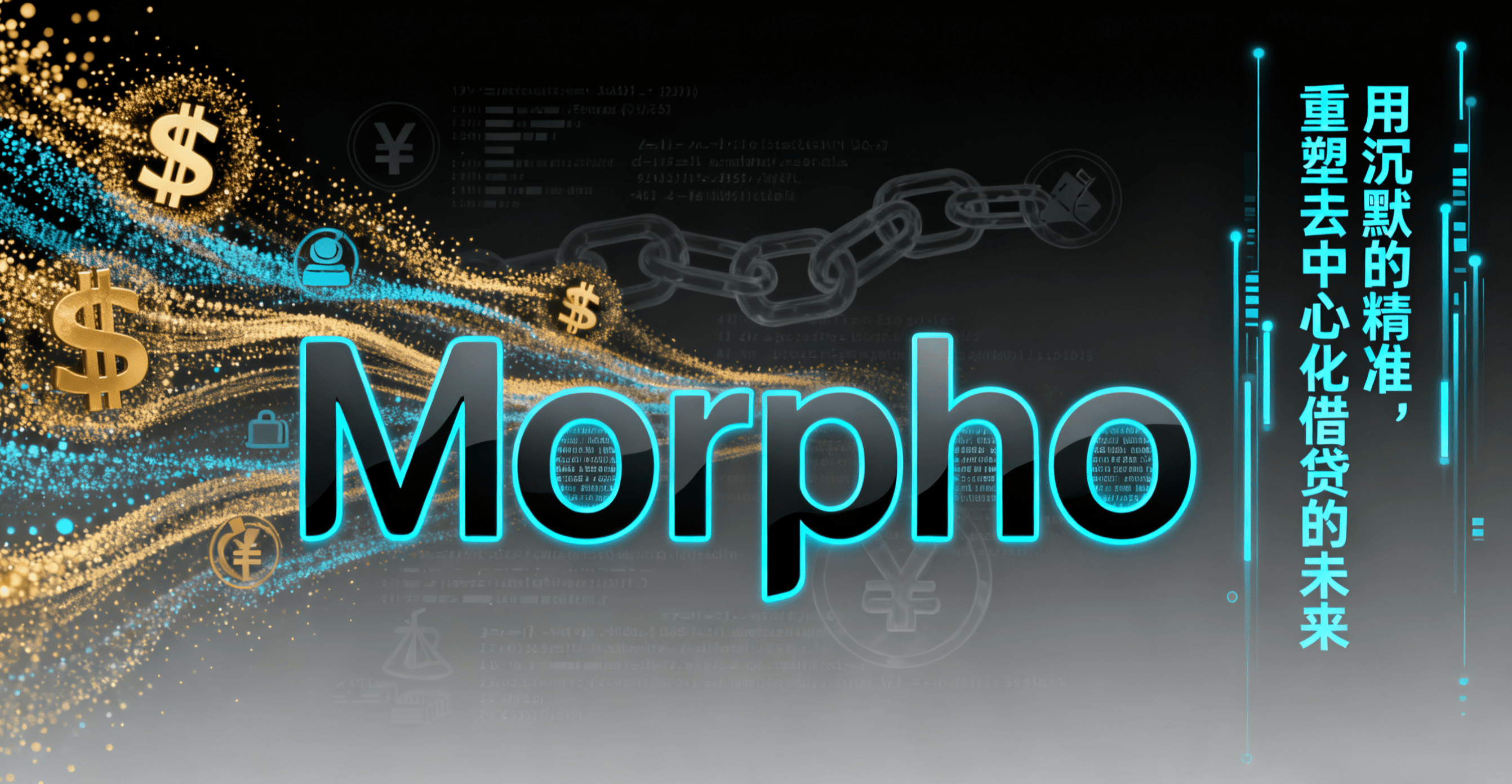
In the development of decentralized finance (DeFi), lending has always been one of the most fundamental and complex applications. The emergence of Morpho aims to solve the long-standing efficiency and structural issues in this field—how to make on-chain lending more efficient and flexible while supporting multi-level needs from individuals to institutions.
In its early stages, Morpho was actually just an 'optimizer'. It built a layer on top of protocols like Aave and Compound, allowing lenders and borrowers to complete transactions at better rates. However, as the user base and capital scale expanded, Morpho began to shift from 'optimizing the existing system' to 'rebuilding the underlying architecture'. The V2 protocol launched in 2025 marks this transformation.
The core of V2 lies in two major components: Markets V2 and Vaults V2. The former is a peer-to-peer lending market based on intent, supporting protocolized loans with fixed terms and fixed rates; the latter allows users to flexibly configure assets across different strategies, achieving instant liquidity and differentiated returns. This means Morpho is no longer just a single DeFi protocol but is gradually evolving into a financial infrastructure capable of supporting customized loans, cross-chain settlement, and institutional-level demands.
The significance of this upgrade is that Morpho is no longer merely pursuing 'optimized interest rates', but is attempting to build an 'exchange' for on-chain credit, allowing both lending and borrowing parties to negotiate freely based on different terms, risks, and collateral types, much like traditional financial markets.
In the past year, a series of collaborations and product launches by Morpho have shown that its expansion pace is accelerating. In June 2025, V2 officially launched, bringing features such as fixed and floating rate loans, cross-chain compatibility, and multi-collateral support. By October, Morpho announced cooperation with Crypto.com and Cronos Labs to bring its lending infrastructure into the Cronos network and plans to integrate Morpho Vaults into the Crypto.com application. This move allows DeFi lending services to reach a broader mainstream user base. Meanwhile, the MORPHO token landing on Binance further increased the project's exposure and liquidity.
At the product level, Morpho's application scenarios already cover multiple layers: ordinary users can deposit assets to earn returns or collateralize loans; developers can build strategies based on its SDK, create Vaults, or integrate into their own applications; institutional users can use Morpho for customized financing, cross-chain settlement, or access tokenized real-world assets (RWA).
Especially noteworthy is the design of fixed-rate and fixed-term loans—this provides institutional capital with more predictable funding costs, making on-chain lending closer to the credit logic of the real world. The instant liquidity of Vaults V2 achieves 'funds not being locked', making switching between strategies more efficient.
Compared to established protocols like Aave and Compound, Morpho's differentiation lies not in scale but in structure. It resembles a 'modular credit system': each market and each Vault can operate independently, with risks not infecting one another; while still sharing underlying liquidity efficiency. The goal of this model is to transform DeFi's lending mechanism from a 'shared pool' into a 'customizable market'.
In addition, Morpho's layout in multi-chain strategy is also noteworthy. Traditional lending protocols mostly concentrate on single-chain ecosystems, while Morpho attempts to achieve cross-chain liquidity and multi-collateral combinations, allowing users to express more complex financial intentions across different chains. This design not only enhances capital efficiency but also makes the boundaries of on-chain credit more open.
Of course, any infrastructure-level protocol must face real-world challenges. Morpho is currently still in the growth validation stage. The ambition for institutionalization needs time to translate into actual lending scale; the complexity of multi-collateral and cross-chain operations also raises higher demands for security and audits. Moreover, with the expansion of fixed-rate markets, Morpho will need to find a balance between compliance and regulation—especially regarding real-world assets (RWA).
At the token level, the market value and circulation growth of MORPHO reflect a certain level of market confidence, but its long-term value still depends on protocol usage rates, lending scale, revenue sources, and ecological integration. What truly supports token value is not trading heat but systemic capital flow and usage frequency.
From a more macro perspective, Morpho's path represents a structural transformation of DeFi: from a speculative model of 'high yield, quick in and out' to a 'stable, scalable, institution-friendly' credit infrastructure. It combines the certainty of traditional finance with the openness of DeFi, attempting to create a central system for on-chain credit.
In the future, if Morpho can continue to expand the total amount of loans, attract real-world assets, and implement 'embedded finance' functions on mainstream platforms, it may become an important bridge connecting traditional capital and the crypto economy. For developers and content creators, understanding the evolution of this underlying architecture is more valuable than chasing short-term returns.
In simple terms, Morpho is moving the DeFi lending system towards an 'adult stage'—a phase that is safer, more flexible, and closer to real financial markets. It is not about reinventing banks, but about reconstructing the way trust and capital flow.
\u003cm-72/\u003e \u003ct-74/\u003e \u003cc-76/\u003e



